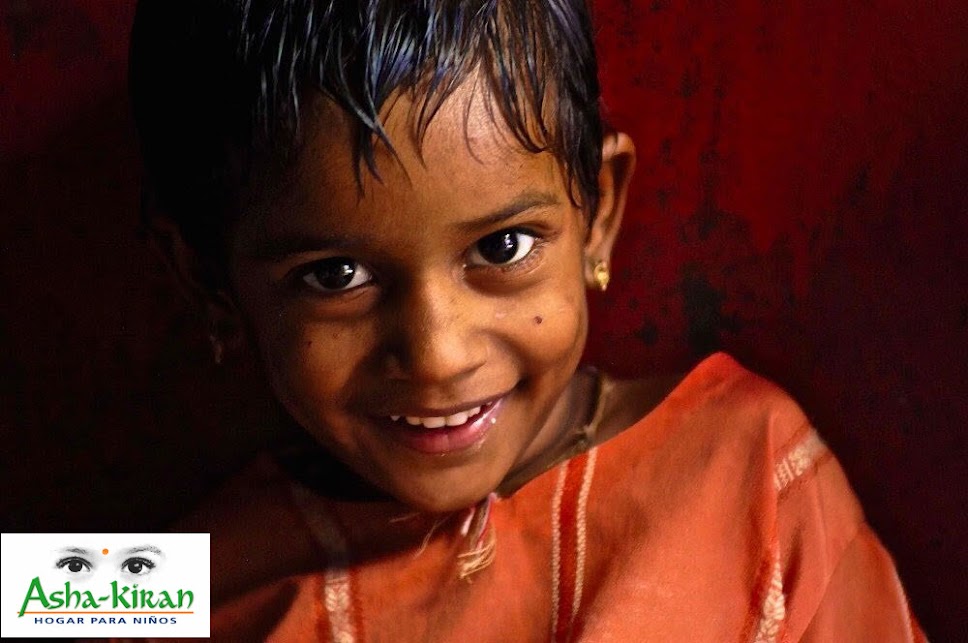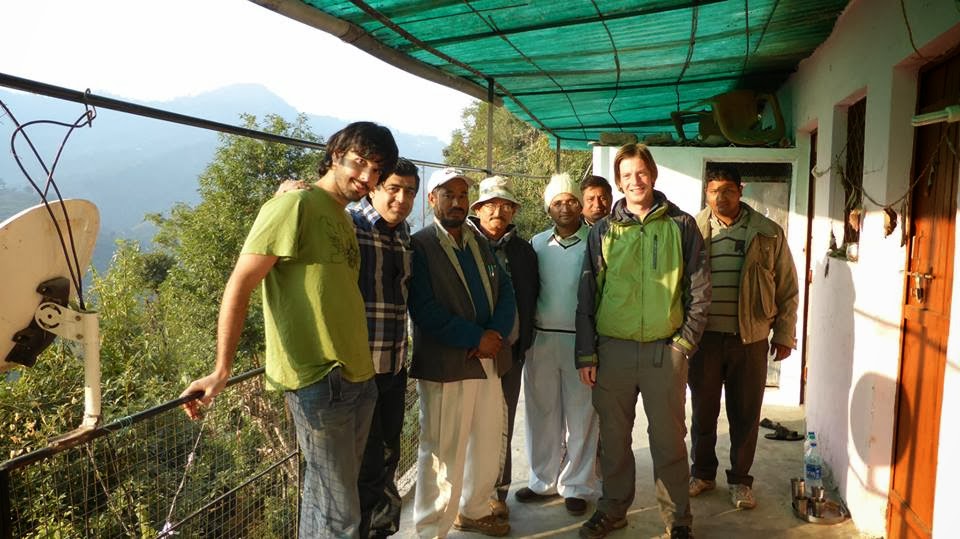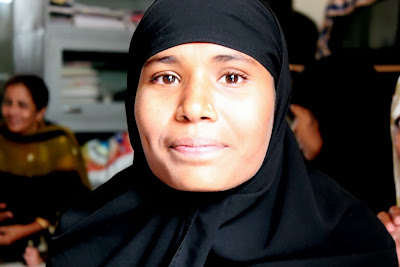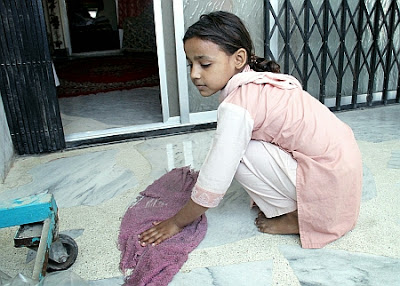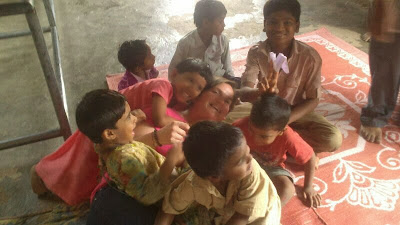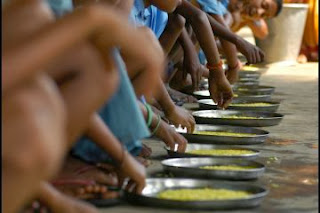I visited a sewing course for women. Some of them are Muslims and dress in black. They live in a slum, amongst rules and prohibitions. Even laughter is banned for them, that's the most inhumane part, but when they get together to sew they can escape the rules. Here, they laugh.
Sitting beside women dressed in black from top to bottom is shocking. I was shocked at first, at least. I didn’t dare to take the camera out. I think I interrupted their routine. All of them looked at me, not knowing what was coming. Deepti introduced me and they introduced themselves one by one.
—I’m Gyoti.
—My name is Pallabi.
—Shagupta
—Mubina
—Aisha
My turn.
—Aïcha, Aïcha, écoute-moi…
They laughed, and I felt comfortable.
They are learning to sew, are just getting started. Making buttonholes, stitching material... Mubina and Aisha are sitting next to me. They had to leave school and started dressing in black when they reached puberty. Now they want to be seamstresses. Someday they will make colored dresses. The title of the text mentions seamstresses in black but not all the women dress like that, only the Muslims. Hindu women wear brightly colored kurtas. That's the only thing that tells them apart; aside from that, they get along well as community women.
Fundación Asha-Kiran created this course, and
Deepti, the coordinator, showed me the project. There are four Rajesh sewing machines in the classroom that resemble old Singers. However, for these women, what they release by talking is more important than what they sew together with thread. “This is a place to talk, the only place where anyone listens. Also, this course may bring them monetary benefit”, says Deepti. “One of the keys to the success of this project is based on proximity - we offer the course in the community itself, and since they are close to home, it’s easier for them to get permission from their husbands. Besides, it's free”.
They put the needles aside for a while and we start to chat. Deepti is the translator and mediator. She magically combines sweetness and respect - it is obvious that her work fulfils her.
The women often talk about their problems at home, so as to release their burden and responsibility. “We usually laugh here”, said one of them,” without having to cover our mouths, as tradition dictates”. They all laugh freely here. For example, they let out a belly laugh when we said that men can wash dishes. “Yes, we know that household responsibilities can be shared with husbands but we would never ask them...”.
“We talk about the situation of women, about why there are so many rapes, for example”, says Nilofer, who has been the most daring when speaking. The women address three serious problems:
Rape. They comment that the media have worsened the situation. Before, violence or sex scenes weren’t found on TV. It wasn’t so easy to see pornographic films. “We can’t talk about sexuality, and movies are the only reference youngsters have. What they do is put into practice what they see in films and they assault any woman to that end”, translates Deepti, adding that “The problem is patriarchy. Also, they know how to choose a victim; they get the weakest one, one that won’t put up a fight”.
Social pressure. According to the women, this is the most serious problem - having to constantly worry about “what people think”. They began to give examples.
We can’t give our opinion because it’s frowned upon.
We can’t talk to men who are not family members.
We can hardly go outside and must always be home at 7 pm.
Our attire is established.
We can’t laugh freely.
The women eat after the men have finished. We eat what they leave behind.
Female child births. Women are seen as a burden in our communities. They are ill treated, they will go live with another family when they get married and will have to pay a dowry on top... why give birth to girls then? This puts pressure on women. “But us women are important, we are mothers, without us there is no birth”, Nilofer reasons.
When we were about to end the meeting, Pallabik, a woman who had been quiet until then, wanted to add something. “Why are we only talking about negative things? She will then tell them abroad and will give a bad image, but we can say, for example, that the President of India was a woman until 2012, and that the chief of police in Pune is a woman”.
Maria
Antonia Artano, Journalist.
